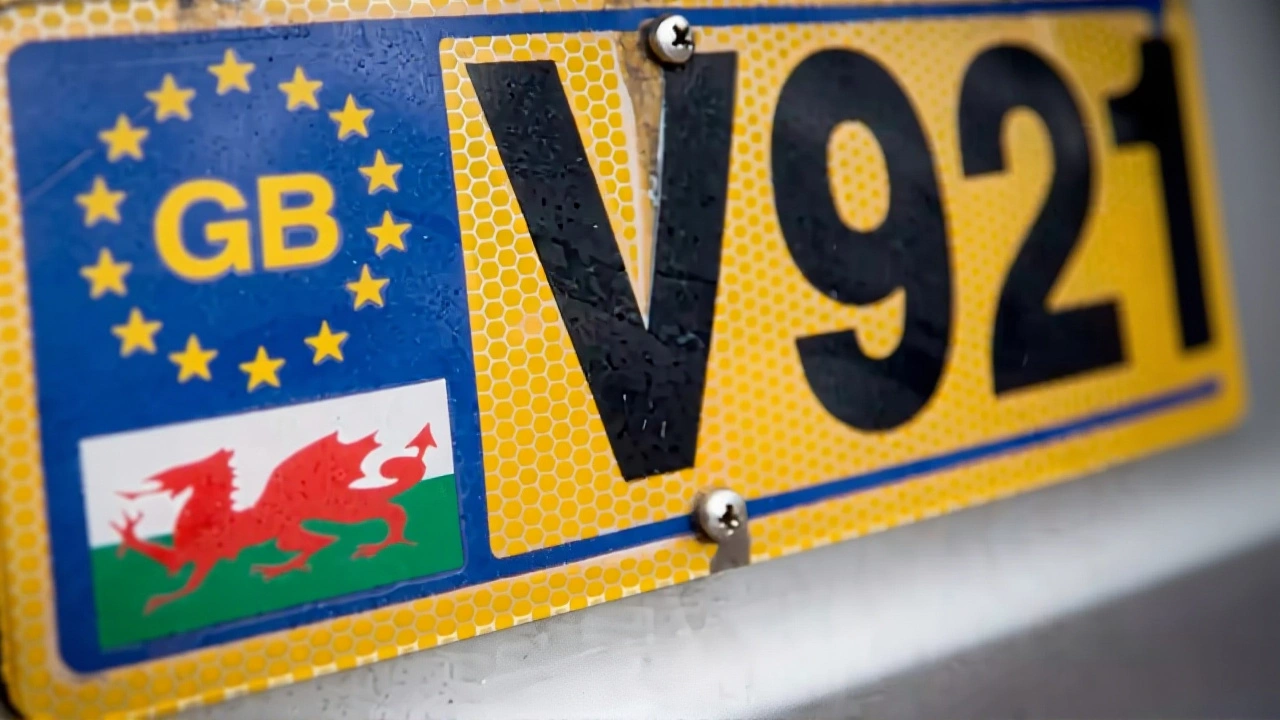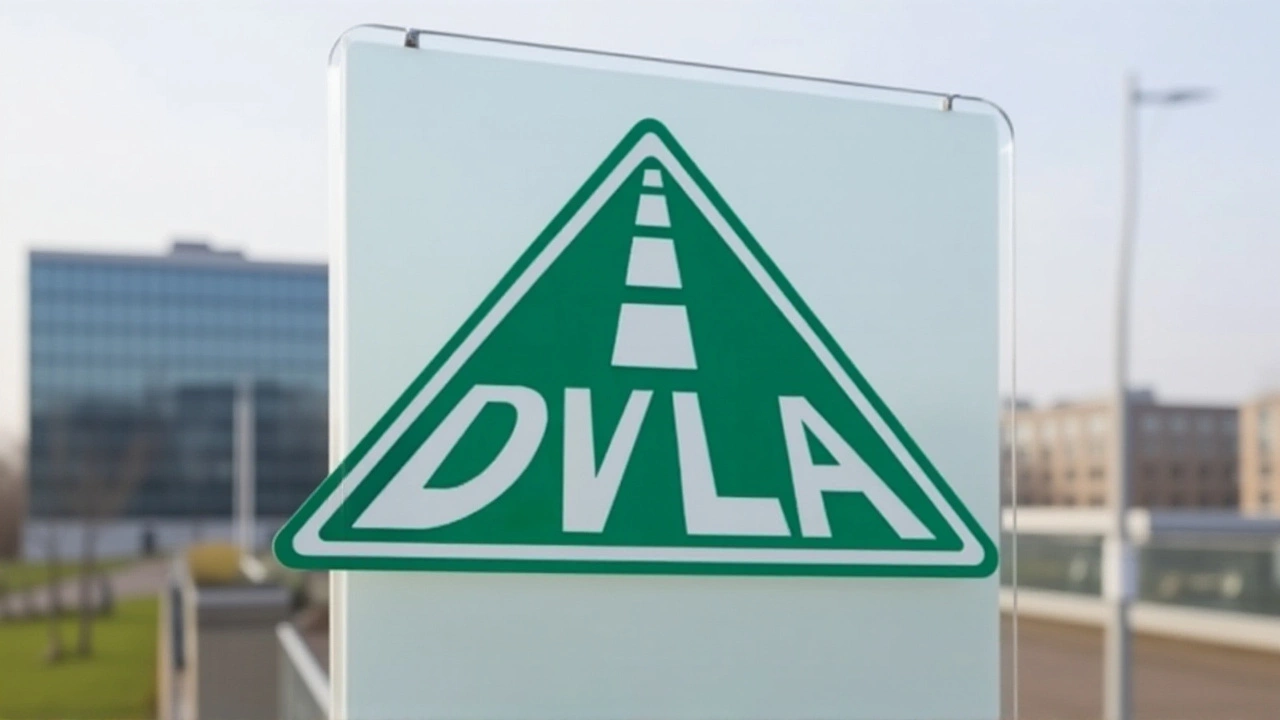
When Driver and Vehicle Licensing Agency (DVLA) rolled out the fresh ‘75’ registration identifier on 1 September 2025, it didn’t just hand out new plates – it sounded a very loud alarm for anyone thinking they could tweak the look of their badge.
From that Monday, motorists across the United Kingdom faced a stark choice: keep the plates pristine or risk a £1,000 fine, an automatic MOT failure, and even a police‑ordered removal from the road. The agency’s warning, issued just days before the mass release of prefix registrations scheduled for 7 October 2025 at 10:00 AM, laid out exactly what “compliant” looks like and why the stakes are suddenly higher than a typical speeding ticket.
Why the UK Number‑Plate System Matters
The British registration system has always been part‑number‑part‑geography, a tradition that dates back to the early 1900s. Each plate carries a two‑letter geographic tag – AA to AY for Anglia, LA‑LY for London, SA‑SY for Scotland, and so on – followed by a numeric identifier that climbs each year. The latest climb landed on ‘75’, a prefix that will stay in use until February 2026 before the system flips to ‘26’ and later to ‘76’ in September 2026.
For most drivers, the change is invisible; the plate’s actual letters and numbers stay the same. What’s visible, however, is the strict visual standard that the DVLA enforces under the umbrella of the Ministry of Transport. The rules, hammered out in British Standard BS AU 145e, dictate reflective material, black characters on a white front plate and black on a yellow rear plate, and – crucially – a single shade of black for any character made after 1 September 2021.
What the ‘75’ Rollout Looks Like
On 1 September 2025, new‑car manufacturers began fitting the fresh number plates with the ‘75’ prefix. The DVLA set a hard deadline: all vehicles registered after that date must bear the new identifier until the February 2026 switch‑over. After that, the agency will issue a second wave of “26” plates, and a third wave – “76” – will roll out in September 2026. The timing aligns with the agency’s broader sequence, which stretches through 2030 (27/77, 28/78, 29/79, 30/80).
Meanwhile, on 7 October 2025, the DVLA opened a virtual queue for thousands of personalized prefix registrations. Drivers can log in from 10:00 AM onward to claim a custom plate, but the same compliance rules apply – no creative rearranging of letters or obscure fonts.
Compliance Rules in Plain English
- Plates must be made of reflective material; non‑reflective plastic is illegal.
- Front plates: white background, black characters; rear plates: yellow background, black characters.
- Only the Charles Wright 2001 typeface (designed by Charles Wright) may be used for every character.
- No background patterns, no extra graphics, and the supplier’s mark must be clearly visible.
- Allowed modifications: raised 3D characters, approved flag symbols, and green flashes for zero‑emission vehicles – but nothing that blurs readability.
If any of those boxes are ticked incorrectly, the UK police forces can issue a fine up to £1,000, fail the MOT, and even impound the vehicle until a compliant plate is fitted.
Enforcement in Action
Police officers have been handed a new set of powers this year. During routine checks, they can now pull over a car simply because the plate looks “stylised” or the characters are spaced oddly. In a pilot operation in London last month, officers stopped 42 vehicles, issued 27 fines, and sent the rest to a nearby inspection bay for an MOT‑related failure. The agency says the move is aimed at preventing fraudulent plates that could be used to obscure a vehicle’s identity.
Motorists who ignore the warning risk more than just a fine. Insurance providers have been instructed to treat non‑compliant plates as a breach of policy terms, which could invalidate coverage in the event of a claim. In other words, you could be left paying out‑of‑pocket for damage that would otherwise be covered.

What Drivers Should Do Right Now
First, check the plate on your car. Does it meet the reflective, colour, and font criteria? If you bought a vehicle after September 2021, the plate should bear the BS AU 145e mark – a tiny oval with the letters “BS” and the standard number. If you’re unsure, the DVLA’s website offers a quick visual guide.
Second, verify any personalised or retained registrations you hold. The agency reminded owners to look at their V750 certificates (for plates never assigned) or V778 retention documents (for plates held in reserve). An outdated certificate can trigger the same penalties as a faulty plate.
Finally, keep an eye on the upcoming 7 October release. If you’re eyeing a custom plate, be ready to act quickly, but don’t gamble on a design that bends the rules. The DVLA will reject any submission that fails to meet the strict visual standards.
Looking Ahead: The Next Decade of Registrations
Beyond the immediate ‘75’/‘26’/‘76’ cycle, the DVLA has plotted a tidy sequence that will carry the UK through 2030. Each year adds a new numeric pair, paired with its “mirror” series (e.g., 27/77, 28/78). The geographic tags remain unchanged, meaning a driver in Manchester will still see an “MA‑MY” prefix regardless of the year. The only thing shifting is the numeric suffix, which the agency updates at the start of each registration period.
Why does this matter? Consistency helps law‑enforcement databases, insurance records, and even roadside assistance services quickly identify a vehicle’s age and registration region. The systematic approach also makes it harder for counterfeit plates to slip through the cracks – a key goal of the current crackdown.
Key Facts
- Launch date of ‘75’ plates: 1 September 2025.
- Fine for non‑compliant plates: up to £1,000.
- Mandatory typeface: Charles Wright 2001.
- Police can remove vehicles on the spot for illegal formatting.
- Personalised prefix registrations open: 7 October 2025 at 10:00 AM.
Frequently Asked Questions
What happens if my plate doesn’t meet the reflective requirement?
A non‑reflective plate is classified as non‑compliant, meaning you’ll face a £1,000 fine and your vehicle will likely fail its MOT. You’ll need to replace the plate with a DVLA‑approved reflective version before you can legally drive again.
Can I still use a personalised plate that I bought before September 2025?
Yes, but only if the plate conforms to the current visual standards. The DVLA will check the typeface, background colour and reflective markings. Any personalised plate that violates these rules must be replaced, even if it predates the ‘75’ rollout.
Why are police empowered to remove vehicles for plate issues?
The new enforcement powers aim to curb illegal “stylised” plates that can hide a vehicle’s identity, which in turn helps prevent fraud and improves road‑safety monitoring. An officer can immobilise a car on the spot, issue a fine, and direct the driver to an MOT centre for compliance.
How will the ‘75’ plates affect insurance premiums?
Insurance firms have been told to treat non‑compliant plates as a breach of the policy’s vehicle condition clause. If you’re caught with an illegal plate, the insurer may raise your premium or, in extreme cases, void coverage until the issue is rectified.
When will the next numeric series after ‘75’ be introduced?
The DVLA planned a transition to the ‘26’ series in February 2026, followed by the ‘76’ series in September 2026. After that, the sequence continues annually (27/77 in 2027, 28/78 in 2028, and so on) through 2030.